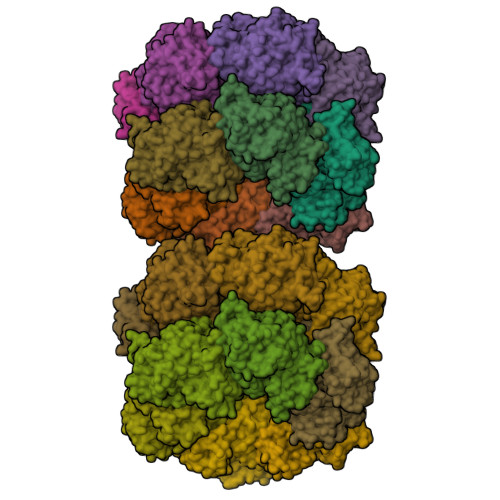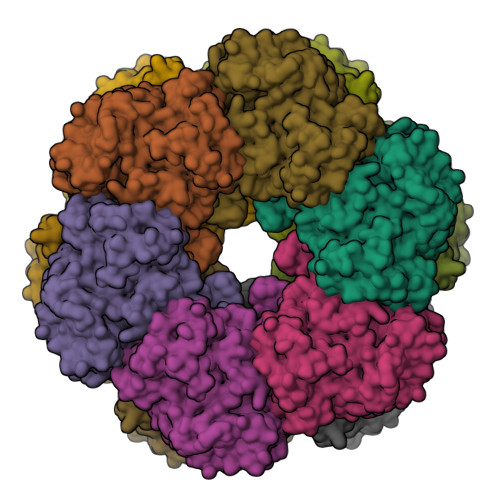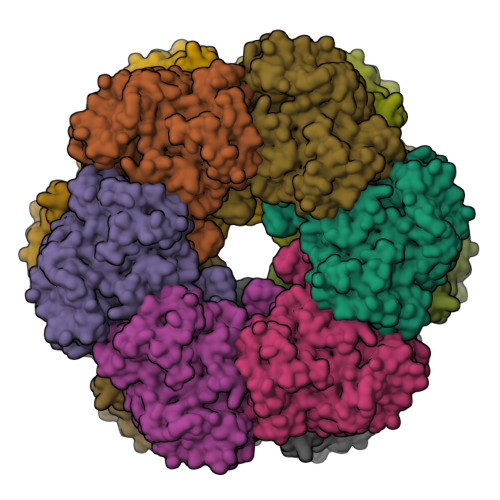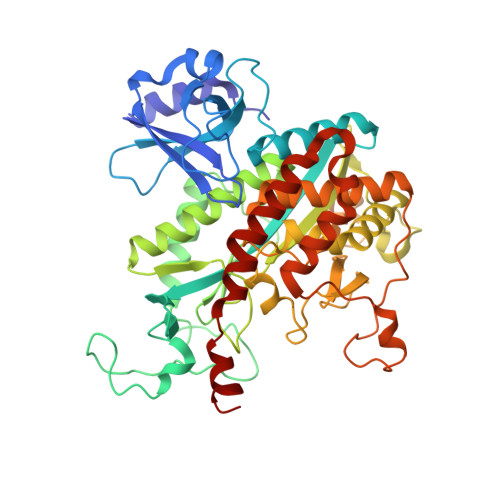Multicopy crystallographic refinement of a relaxed glutamine synthetase from Mycobacterium tuberculosis highlights flexible loops in the enzymatic mechanism and its regulation.
Gill, H.S., Pfluegl, G.M., Eisenberg, D.(2002) Biochemistry 41: 9863-9872
- PubMed: 12146952
- DOI: https://doi.org/10.1021/bi020254s
- Primary Citation of Related Structures:
1HTO, 1HTQ - PubMed Abstract:
The crystal structure of glutamine synthetase (GS) from Mycobacterium tuberculosis determined at 2.4 A resolution reveals citrate and AMP bound in the active site. The structure was refined with strict 24-fold noncrystallographic symmetry (NCS) constraints and has an R-factor of 22.7% and an R-free of 25.5%. Multicopy refinement using 10 atomic models and strict 24-fold NCS constraints further reduced the R-factor to 20.4% and the R-free to 23.2%. The multicopy model demonstrates the range of atomic displacements of catalytic and regulatory loops in glutamine synthesis, simulating loop motions. A comparison with loop positions in substrate complexes of GS from Salmonella typhimurium shows that the Asp50 and Glu327 loops close over the active site during catalysis. These loop closures are preceded by a conformational change of the Glu209 beta-strand upon metal ion or ATP binding that converts the enzyme from a relaxed to a taut state. We propose a model of the GS regulatory mechanism based on the loop motions in which adenylylation of the Tyr397 loop reverses the effect of metal ion binding, and regulates intermediate formation by preventing closure of the Glu327 loop.
Organizational Affiliation:
Howard Hughes Medical Institute, UCLA-Department of Energy Laboratory of Structural Biology and Molecular Medicine, Department of Chemistry and Biochemistry, Box 951570, University of California, Los Angeles, CA 90095-1570, USA.




















